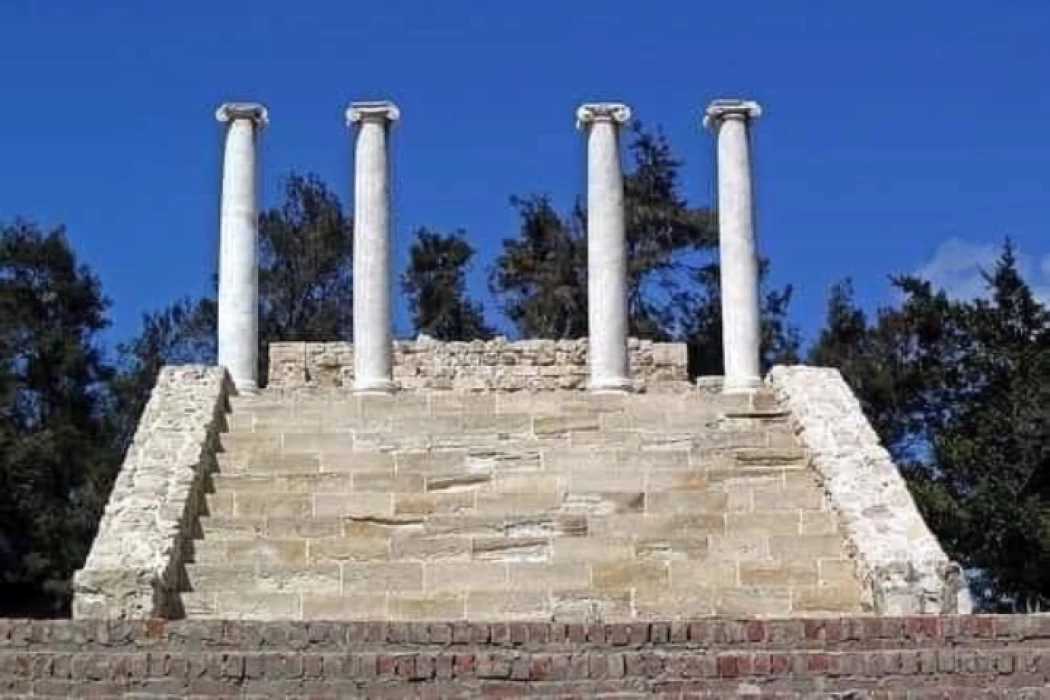
The Black Head Temple
The Ras Al-Black Temple is an archaeological temple that was accidentally discovered in 1936 by chance in the area of Ras Al-black in Sidi Bishr, and was located within a modern residential area, and faces difficult environmental conditions of groundwater and sanitation. To save the temple, the SCA Supreme Council of Antiquities decided to move the temple in 1995, and chose a high-rise site within the Lateen cemetery area in the center of Alexandria in front of the Bab Sharq police station on Freedom Road. It took six months to dismantle the stones of the temple and rebuild them in the new place. And the remaining part of it now is not a temple in the understandable sense, but a small structure. The Latin necropolis known as the "alabaster" dates back to the early Ptolemaic period.
Layout of the temple:
First floor:
the temple consists of two floors, the lower one was dedicated to worship, while the upper one was for the residence of the temple priests. steps are built the entire width of the facade of the building. Steps lead to an atrium topped by four marble columns with an ionic Crown. Behind the columns there is the main chamber of the temple, a square chamber, and attached to the northern wall is a terrace paved with stone, which was topped by five statues of white marble: a statue of ISIS, a statue of harpocrates, the third of "hermanobis", and two statues of canopic lasuris, the gods of the temple, all of which are currently in the Greco-Roman Museum. In front of the terrace is a small altar, near which two statues of the Sphinx were found, which are to protect the temple from any danger it may be exposed to.
Second floor:
It is accessible via a narrow staircase in the eastern wall of the temple and houses the priests ' residence. It consists of two rooms that are similar in their construction method, with the first floor indicating that they are from the same era as the temple and not an addition from later eras. The two chambers have been largely demolished, and there are no inscriptions on the inner or outer walls of the temple.
Consecration of the temple: the temple of the black cape was dedicated by one of the Knights named "Isidore", i.e. "the gift of ISIS", who had fallen from his war chariot and injured his foot, and when his foot was healed, he made a vow to ISIS, a foot of white marble wearing shoes erected over a square column of marble on which an inscription was recorded in Greek saying: "Isidore dedicated the image of this foot to the goddess who saved him after the fatal fall from the chariot". And the goddess meant here is the goddess Isis, to whom that temple was dedicated. The temple is dated to the middle of the 2nd century AD.














